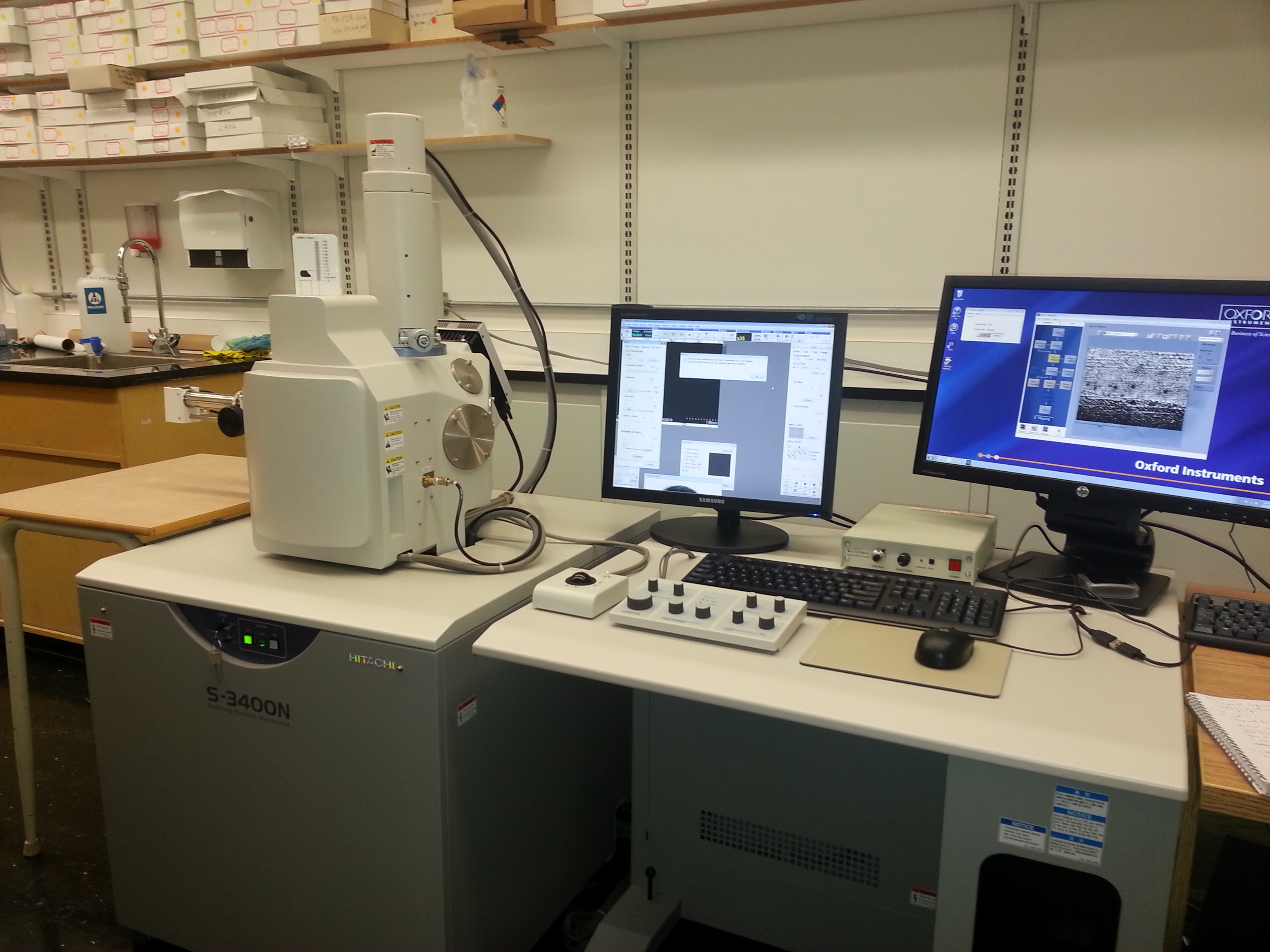gogot.julien [at] uqam.ca (gogot[dot]julien[at]uqam[dot]ca)
Geotop-UQAM
201, Président-Kennedy Ave.
7th floor, room PK-7280
Montréal, QC H2X 3Y7
Canada

The laboratory is equipped with a Hitachi S-3400N type II scanning electron microscope with 4 detectors.
The secondary electron detector is used for high-resolution images (dinocysts, diatoms, coccoliths, etc.) This detector only operates under high vacuum, but it allows high magnifications. It generally requires the deposition of a conductive material (carbon or platinum) on the surface of the sample to avoid static charge effects. It is still possible to obtain good quality images, without conductor deposition, by correctly adjusting the electron beam.
The backscatter electron detector is sensitive to the nature of the observed material, the grey tones of the image being a function of its density. It is especially useful for the study of minerals and particularly thin sections. It works perfectly under high vacuum, but it can also operate in variable pressure mode. In this mode, the partial air pressure of the sample chamber eliminates static charge effects, avoiding us from depositing a conductor on the sample.
The X-ray detector, or EDX detector, is generally used in combination with backscattered electron observation. The shades of grey indicate the varying density of the observed minerals, while the EDX analysis gives the chemical composition. With a suitable voltage of the electron beam, it is possible to analyze the elements of the periodic table, from carbon to uranium. It can also operate in high vacuum, in combination with the secondary electron detector. In this case, it will also analyze the conductive material deposited on the surface of the sample.
Some minerals emit light with the ionization produced by the electron beam. This light is used by the cathodoluminescence detector to produce an image. Cathodoluminescence is useful for highlighting zonation patterns in zircon grains that will be dated with the uranium-lead method.

